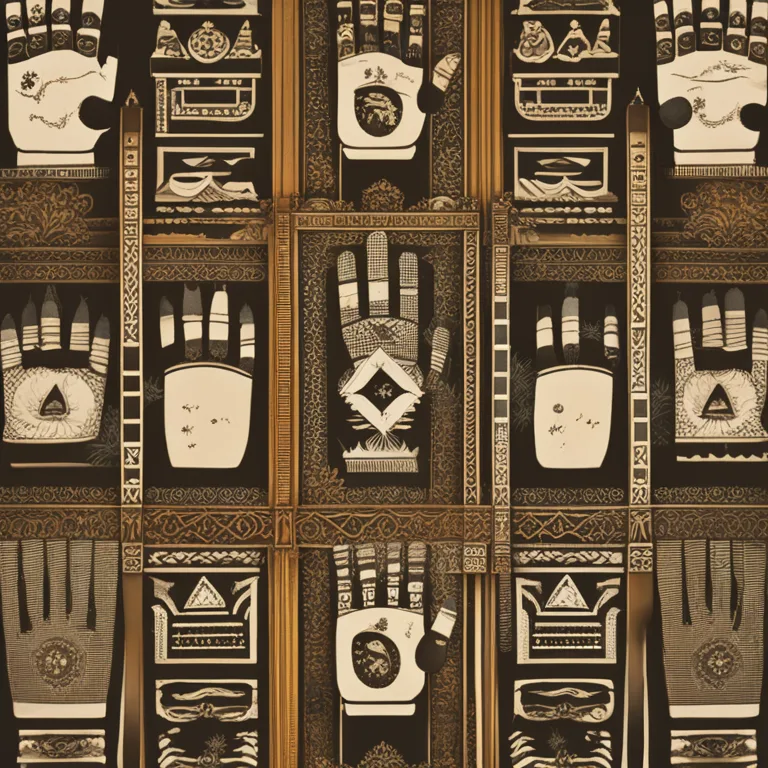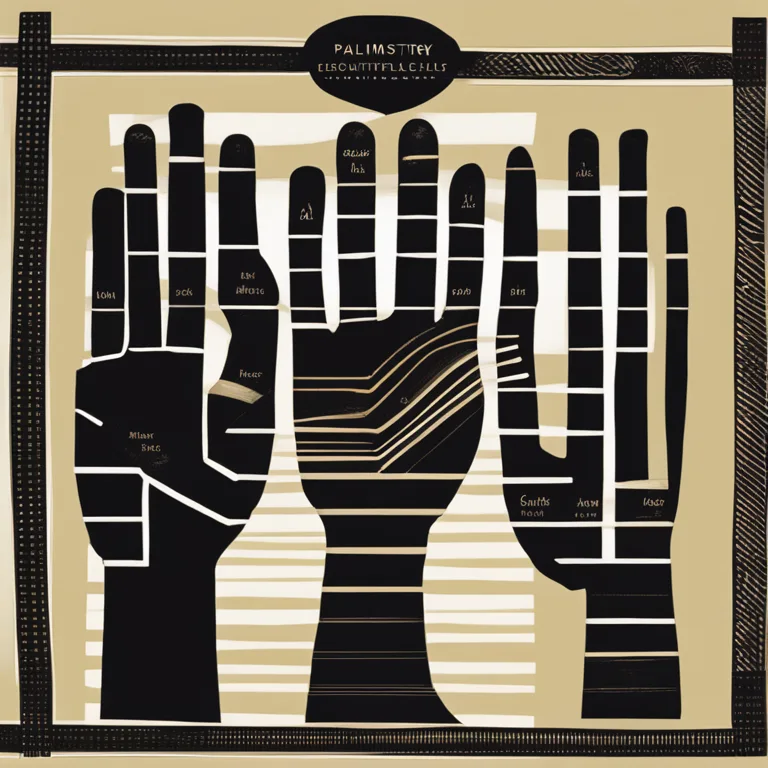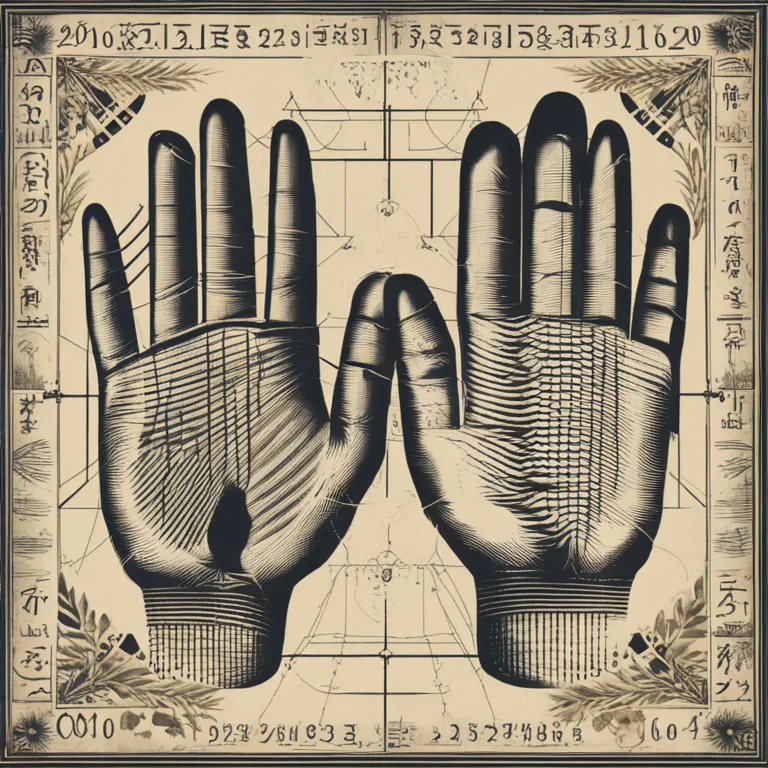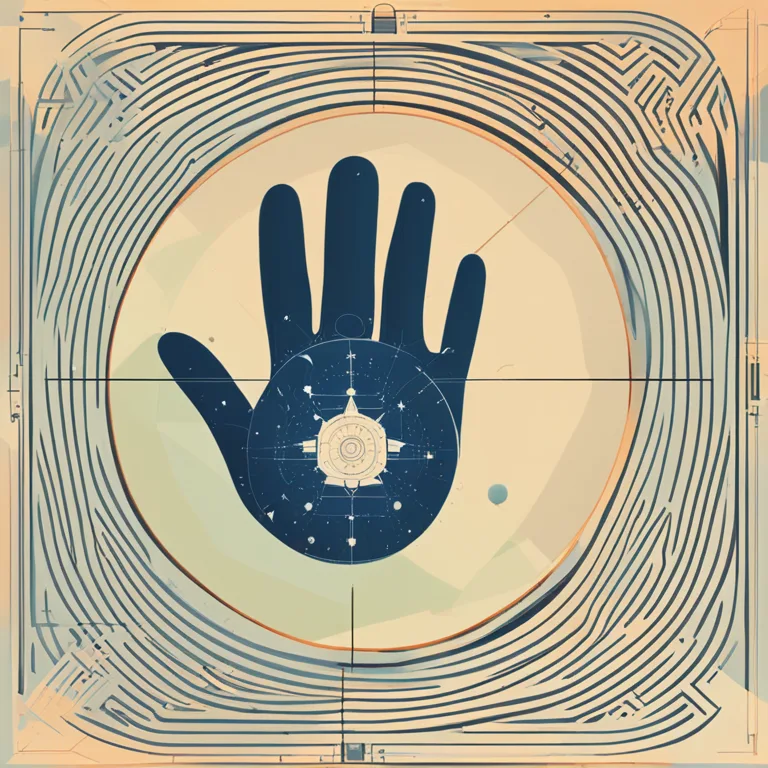
The Precision of Palmistry: Myth or Reality?
Investigating the accuracy of palmistry, this article scrutinizes its historical context and modern application to understand its potential as a tool for personal insight.
article by Nora Pennington
Introduction to Palmistry
Palmistry, also known as chiromancy, is the ancient art of analyzing the palm's lines, shapes, and patterns to foretell a person's character and future. Its roots can be traced back thousands of years across various cultures. Although its principles remain mostly unchanged, palmistry's relevance and accuracy continue to be debated. In the age of data-driven analytics, the question of palmistry's precision as a form of personal insight and forecasting is more pronounced than ever.

Historical Perspectives
Historically, palmistry has been practiced in diverse cultures around the globe. It has been held in high regard by some and dismissed by others. The practice has survived through the ages owing to a combination of human curiosity, tradition, and the anecdotal accuracy of some of its findings. However, evidence-based scientific support for palmistry has not been prolific, leaving the practice resting heavily on subjective interpretation and individual conviction as opposed to objective verifiability.

A Psychological Approach
From a psychological viewpoint, the Forer effect suggests that individuals will find vague, general statements as highly accurate when they believe they are tailored specifically to them. Palmistry readings often contain elements that can apply to a broad audience, which may contribute to their perceived accuracy. This, coupled with cognitive biases, can lead individuals to affirm the accuracy of a palm reading based on selective acknowledgment of truths and disregard of inaccuracies.

Modern-Day Palmistry
In the current era, palmistry has seen a mixture of revival and skepticism. Technology has enhanced its reach through apps and online readings, thus subjecting it to increased scrutiny. Scientific advancements challenge palm readings with demands for empirical evidence. Despite this, a niche audience continues to regard palmistry as a guide for understanding one's strengths, weaknesses, and potential paths in life, rather than a definitive forecast of future events.

Empirical Evidence and Critique
Critics of palmistry point to a lack of empirical evidence supporting its claims. Studies aimed at testing the accuracy of palmistry have frequently encountered methodological issues, such as the lack of a standard framework for interpretations and the subjective nature of readings. As such, the scientific community generally considers palmistry a pseudoscience for its inconsistent methodologies and untestable hypotheses.
Personal Insight or Parlor Trick?
Palmistry may offer personal insights to believers that could lead to self-reflection and increased self-awareness. Proponents argue that, like art, palmistry provides narrative and symbolism that help people understand their lives in richer ways. Nonetheless, interpreting one’s palm lines as veritable predictors of one’s future stands on flimsy ground. It boils down to an individual’s personal belief in the power and accuracy of the practice.
Conclusion: The Verdict on Palmistry's Accuracy
The question of palmistry's accuracy is not easily settled. For enthusiasts, its worth may lie in its subjective benefits—self-exploration and entertainment. For skeptics, the lack of empirical backing overshadows any claims of precision. Ultimately, palmistry finds itself in the realm of personal belief, where the weight of anecdotal success must be balanced against the absence of scientific validation.
Published: 1/3/2024
Modified: 1/3/2024
More predictions
Come back here soon to learn more about yourself and your future


Exploring The Secrets of Palmistry
Delve into the ancient art of palmistry and discover how the lines on your hands can mirror the pathways of your life and fate.


The Art Of Palmistry
Delve into the ancient practice of Palmistry to discover how the lines and shapes on your palm reveal aspects of your personality and destiny.


The Art Of Palmistry Readings
Delve into the mystical world of palmistry and discover how reading palms can offer insights into your personality and future.